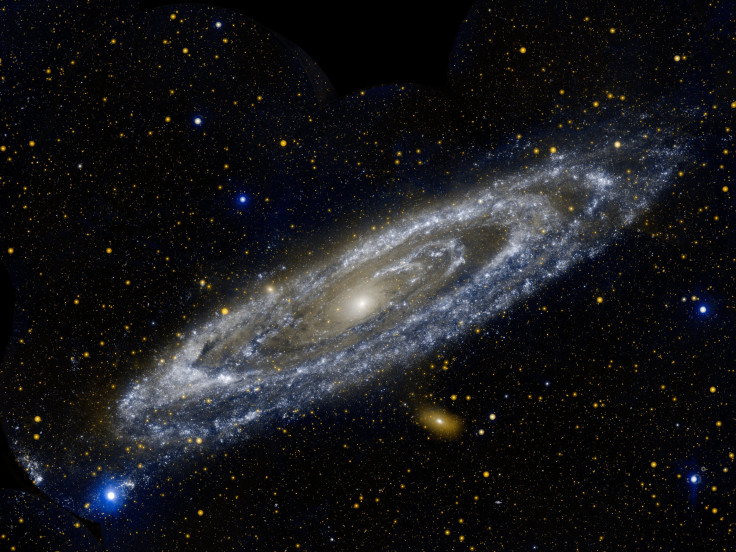Andromeda's Halo Is So Massive It Touches The Milky Way

KEY POINTS
- Researchers conducted the most comprehensive study of a galaxy's halo so far
- They found Andromeda's halo extends up to 2 million light years from it
- This means Andromeda's and Milky Way's halos are likely already overlapping
Researchers using data from the Hubble Space Telescope to map the halo around the Andromeda galaxy found that it's so massive that it is practically touching our galaxy's halo.
The Andromeda galaxy is the closest large galactic neighbor of the Milky Way at 2.5 million light years away. With a similar shape and size, it could appear as a cigar-shaped patch of light in the sky.
But disk galaxies such as Andromeda are more than just a collection of stars, dust and dark matter that are easily visible because they also have nearly invisible halos. These halos contain just a small percentage of a galaxy's mass and have very low luminosity, making them very difficult to see. In Andromeda's case, its halo is made up of ionized gas that does not emit easily detectable radiation.
For a new study, a team of researchers embarked on Project AMIGA (Absorption Map of Ionized Gas in Andromeda) and used Hubble's Cosmic Origins Spectrograph to map Andromeda's halo using the 43 quasars scattered around it. In the past, there was limited information on the quasars but Project AMIGA was able to use significantly more quasars, painting a clearer picture of the galaxy's halo.
The researchers found that Andromeda's halo actually extends 1.3 million light years away, with some areas even extending 2 million light years away, reaching far beyond the galaxy. In fact, at 1.3 million light years, it is already halfway to the Milky Way.
At these distances, Andromeda's halo and Milky Way's halo are already bumping into each other and, if Andromeda's halo was visible to the naked eye, it would be the biggest feature in the night sky at three times the length of the Big Dipper.
Our nearest galactic neighbor has a halo. 😇
— NASA (@NASA) August 27, 2020
With @NASAHubble, scientists mapped a nearly invisible halo of gas around the Andromeda Galaxy, extending halfway to our Milky Way. If human eyes could see it, it would be the biggest feature in the night sky: https://t.co/mgECyva6Wc pic.twitter.com/LefP15mNmd
"We find the inner shell that extends to about a half million light-years is far more complex and dynamic," study lead Nicolas Kehner of the University of Notre Dame said in a NASA news release. "The outer shell is smoother and hotter. This difference is a likely result from the impact of supernova activity in the galaxy's disk more directly affecting the inner halo."
Although researchers have previously determined that Andromeda's halo is quite massive, it is only through the new study that it has been studied extensively. It is said to be the most comprehensive study of a galaxy's halo so far.
In studying the halos of other, more distant galaxies, the number of bright enough quasars is very limited because they appear much smaller in the sky. And in the case of the Milky Way, studying its halo is not as easy because we are inside it.
Since Milky Way and Andromeda are quite similar, scientists expect their halos to be similar as well.
"Understanding the huge halos of gas surrounding galaxies is immensely important," study co-author Samantha C. Berek of Yale University said in the NASA news release. "This reservoir of gas contains fuel for future star formation within the galaxy, as well as outflows from events such as supernovae. It's full of clues regarding the past and future evolution of the galaxy, and we're finally able to study it in great detail in our closest galactic neighbor."
"So Project AMIGA has also given us a glimpse of the future," Lehner said.
The study is published in The Astrophysical Journal.
© Copyright IBTimes 2025. All rights reserved.






















